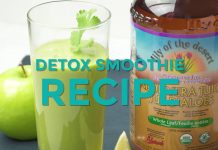
Adult acne is almost always associated with low or absent stomach acid production. Low stomach acidity prevents a person from completely digesting their foods, especially the high protein, high fat foods. As a result, partially digested foods may get absorbed into the blood eliciting an allergic/inflammatory response. In essence, the food which is partially digested behaves as if it were an allergen that needs to be attacked by the immune system. Even so-called healthy foods can turn into allergies when hydrochloric acid is inadequate and thus rashes like acne and hives can result.
To make matters worse, the undigested foods in the gastrointestinal tract can putrefy. Thus foul smelling gas, bloating, constipation and bowel toxemia occurs. Some of these bowel toxins can reabsorb via a beleaguered liver into the bloodstream leading to a worsening of acne as the body tries to eliminate the waste products through the skin.
Can we cure adult acne?
Aside from its role as a protein digester, hydrochloric acid boosts immunity by activating sluggish white blood cells to gobble up bacteria, viruses, parasites, and other invaders. Candida (yeast) overgrowth is yet another complication of low stomach acidity and candida toxins (fungal mycotoxins) can suppress the immune system making it easier for the individual to catch one infection after another. For more information on candida and how to treat it, see The Complete Candida Yeast Guidebook (Prima Publishing, 2000) co-written by Jeanne Marie Martin and myself. To reverse adult acne, correction of the low stomach acidity is mandatory.
Low stomach acidity can be caused by stress; heredity; drugs like Tagamet, Zantac, Pepcid, Losec, and other antacids; excessive intake of dairy products, and high-gluten-containing grains (especially wheat, rye, oats, and barley) or other unsuspected food allergies. Wheat, other grains, corn, sugar, chocolate, caffeine, eggs, citrus, and other common foods are the likeliest food triggers. Isolating and eliminating the offending foods can do a lot to control acne. Supplementing with stomach acidifiers (e.g., stomach bitters, betaine and pepsin hydrochloride, plant enzymes, apple cider vinegar, glutamic acid, B complex vitamins, vitamin C) would be the next step. The type and amount of acidifiers can be determined by a health care practitioner through a combination of trial and error and laboratory tests (e.g., comprehensive digestive and stool analysis).
Dr. Rona










